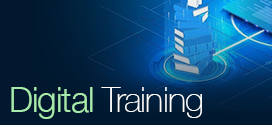
Now, more than ever, access to data, analytics, research
and technology is critical to your mission. From
the classroom, boardroom, or home, for 25+ years
WRDS has supported users with targeted solutions that
underpin research, reinforce learning, and enable discovery.

This video offers a more technical walkthrough of the new CIZ format (Version 2.0), focusing on how to navigate changes to variables. It includes code conversion examples for everyday research tasks. You will learn:
- How to use CRSP’s new meta tables
- How CRSP calculates monthly returns
- Where to find CIZ support info and sample code

Learn about different types of identifiers used in financial data, as well as the distinction between universal and proprietary identifiers. This introductory tutorial explains why understanding the identifiers in your chosen dataset--along with the date ranges for which they are valid--is important to consistency and accuracy in your research.

This third video explains how to use web queries to access the SEC filings--including lists of exhibits and 8-K items--with a particular emphasis on the versatility of the search function. The discussion also includes a description of available textual analytics tools.

This final video in the Fama-French series demonstrates the last step in the process: how to calculate the SMB and HML Fama-French factors. Presentation includes a detailed examination of the relevant portion of the SAS code used for replicating the Fama-French factors.

SASPy is a Python package which enables integration of SAS programs with Python programs. This video--the first in a 4-part series--presents a general overview of the package, including:
- Reasons for using SASPy
- Configuration for local computer
- How to use SASPy on the WRDS Cloud

This third video in the SASPy series demonstrates how to work with SASPy on WRDS Jupyter Hub. The tutorial covers many functions, including:
- Advanced SAS data access using dataset options
- Methods for submitting a SAS job
- Transferring macro variables between SAS and Python

I explained how to login to SAS Studio and described some of the features in the screen layout. I will now explore a dataset. Here I am opening up the Compustat Daily North American Fundamentals dataset, called funda, which is used as the base dataset for the similarly named web query.

I explained how and where to store data on WRDS Cloud, the underlying server powering SAS/Studio. I will now go through an example process of uploading a file to my Home directory, running custom code to query data on WRDS, and download my results to my Home directory and or local computer.

I explored a dataset in SAS/Studio. I will now explain the different options for data storage on WRDS Cloud and how to access these folders in SAS/Studio. SAS/Studio runs on the WRDS Cloud, our high performance computing cluster. This means that, while you access it in your web browser on your computer, the SAS that runs underneath it runs on our powerful servers.

Through parsing of the SEC 13F Holdings data reported in XML attachments, you can access details on holdings as well as well as summary information of equity positions held by institutional investors. As such format was mandated by the SEC after June 2013, the SEC 13F Holdings data is complete only for the period after that reporting date.

I/B/E/S International Inc. created their Academic Research Program over 30 years ago to provide both summary and individual analyst forecasts of company earnings, cash flows, and other important financial items, as well as buy-sell-hold recommendations. In 2000, I/B/E/S was integrated with Thomson Reuters / First Call, and in 2012 First Call was discontinued.

WRDS' proprietary SEC research platform is used in such disciplines as corporate due diligence, forensic accounting, disclosure research, and investment management. This teaching tool is designed to help you to learn more about the different components of the suite.
WRDS guides you through the website and introduces you to query pages, innovative tools, comprehensive resources, and research support.
WRDS democratizes data access so that all disciplines can easily search for concepts across the data repository — hosting the broadest collection of data on the most robust computing infrastructure.
Designed for researchers who use CRSP data, this overview explains the shift to the new CIZ format, also known as Version 2.0.
- What’s changed?
- What’s stayed the same?
This video offers a more technical walkthrough of the new CIZ format (Version 2.0), focusing on how to navigate changes to variables. It includes code conversion examples for everyday research tasks. You will learn:
- How to use CRSP’s new meta tables
- How CRSP calculates monthly returns
- Where to find CIZ support info and sample code
Learn about different types of identifiers used in financial data, as well as the distinction between universal and proprietary identifiers. This introductory tutorial explains why understanding the identifiers in your chosen dataset--along with the date ranges for which they are valid--is important to consistency and accuracy in your research.
In this overview of BoardEx you will learn about coverage, how the data is structured, key identifiers, and the answers to some frequently asked questions from researchers.
Access WRDS data through our easy-to-use web-based interface. The only requirements are a web browser and Internet access. Learn how to:
- Add filters and select variables
- Select the output format
- Download the data
- Access past queries
This tutorial is intended for first-time users, or experienced users looking to refresh their knowledge.
This is WRDS’ introduction to accessing data through SAS/Studio. This tutorial is intended for first time users or experienced users looking to refresh their knowledge of how to access and explore data in SAS/Studio.
Quickly learn how to access Jupyter on WRDS using the Python kernel.
- Explore the WRDS Python package, designed for straightforward data access
- Retrieve Dow Jones data
- List libraries available to your institution
This quick overview of the research data on WRDS begins by describing usage of the most popular databases.
Databases offered on WRDS are introduced, categorized by topic:
- Pricing data, including CRSP, Compustat, TAQ, OptionMetrics, and TRACE
- Fundamental data, including Compustat, FactSet, Capital IQ and WorldScope
- Earnings and estimates data, including I/B/E/S and Zacks
- Institutional ownership data, including Thomson Reuters, CRSP Mutual Funds, WRDS-SEC Data, and AuditAnalytics
- Other types of data, including ExecuComp, BoardEx, RavenPack and Capital IQ Key Developments
The video concludes by highlighting a suite of tools that can be used to link databases for conducting empirical research.
Our experts guide you in finding the data needed for your research.
- How data is categorized
- Techniques to locate data
- Resources that index WRDS' data
This video tour will guide you through the extensive support services offered by WRDS.
Our staff of technical and research specialists assist with questions pertaining to research, data queries, and programming.
Experience how this teaching and learning toolkit can introduce finance and business concepts through interactive applications and simulations.
Instructors can utilize these robust tools as a core component of the curriculum, for stand-alone lessons or assignments, or for visually compelling classroom demonstrations.
Topics
- Introduction to WRDS
- Investments, Fixed Income, and Accounting
- Text Analysis
- Macroeconomics
Our doctoral-level expert guides you through an overview of Compustat data on WRDS:
- What is Compustat?
- Coverage
- Important types of data in Compustat
Expand your knowledge of the benefits of Compustat data on WRDS through this guided video overview.
Supporting all levels of experience, Part II of our Compustat overview continues with instruction on
- How to access data
- How to link with other data for research
Access a comprehensive overview of CRSP data on WRDS.
Key discussion points include:
- The popularity of CRSP data
- CRSP features and benefits
- Types of CRSP data accessible
- Examples of how data is presented on WRDS
Explore CRSP’s stock database and find out why it is relied on by researchers across the globe.
Topics covered in this overview include:
- Types of Updates
- Time Series vs Event Files
- How to Merge the files
CRSP's rigorous analysis for accuracy and unique research source is characterized by its unmatched breadth, depth, and completeness — providing unique permanent identifiers backtesting, time series and event studies, and measurement of performance.
Learn about the breadth of coverage for CRSP data in this video overview.
CRSP data on WRDS
US Stock
Historical Indices
US Index History
US Treasury and Inflation Series
Survivor-Bias-Free Mutual Funds
CRSP-Compustat Merged
Ziman Real Estate
Learn two different ways to download the historical S&P 500 constituents from CRSP and save the data in different formats:
- Use SAS Studio
- Use a Jupyter Notebook
Requires a subscription to CRSP.
Become a more advanced CRSP user by learning details about CRSP variables, such as:
- What are "negative" CRPS prices
- How to use CRSP data to create a time-series of prices that is consistent after a split
- An explanation of the formula used to calculate returns with dividends
- How delisting returns are calculated
- What to do about missing delisting returns
- How to calculate market capitalization
Learn how to merge data from the two most widely-used databases in empirical financial research. The discussion covers:
- Important structural differences between the two datasets
- Code for merging CRSP and Compustat data at the security level by CUSIP
- Code for using the CRSP/Compustat Merged Database (CCM) to merge by CCM link table
- Notable differences between matching by CUSIP and matching using CCM
Take a guided tour through I/B/E/S data — the premier analyst forecast data in academia.
Key discussion points:
- Introduction
- Data categories
- Identifiers
- Forecasting time lines
- I/B/E/S Research Guide
Conduct research using I/B/E/S, I/B/E/S Global Aggregates, I/B/E/S Key Performance Indicators (KPI), and I/B/E/S Guidance.
Identify detailed company financial information for U.S. and international public and private companies and investment firms through S&P Capital IQ.
Access these key S&P Capital IQ databases through WRDS:
- Capital Structure-Debt
- Key Developments
- Professionals
- Transcripts
This video presents an overview of Capital IQ on the WRDs platform, including detailed information on the following datasets:
- Capital Structure
- People Intelligence
- Key Developments
- Transactions
- Transcripts
The video concludes with a use case study, illustrating the powerful links available across Capital IQ products.
Capital IQ Transcripts provides historical conference call transcripts form around the world, covering approximately 8,000 public companies. Learn key information for using this data, including:
- Details about coverage
- How the data is collected and processed
- How the data in the CIQ Transcripts package on WRDS is structured
- Summary statistics, such as call types and a breakdown of transcripts by country and year
- Description of the full text data accessible on the WRDS Cloud
Using concrete examples with Capital IQ Transcripts, this video illustrates different ways to access data. For example, instructions are provided on how to pull Apple's 2015 earnings call transcripts using:
- PC-SAS Connect
- Python
- PostgreSql on the WRDs Cloud
Begins with an overview of Compustat Global, highlighting the database's coverage and available variables. Will you need to filter by country for your research? Step-by-step instructions are provided.
The three types of Compustat Global data available on the WRDS platform are explored:
- Fundamentals data
- Index constituents and index prices
- Securities data
The tutorial concludes with a discussion of some common research questions regarding Compustat Global data.
Compustat Execucomp is introduced, with a discussion of the:
- Data, including details about coverage, where the data is sourced from, and the different datasets that make up Execucomp
- Compensation items, including total compensation, cash compensation, and stock & option compensation
- Tracking of executives, including using the annual CEO flag, and identifying board members that are CEOs
The video concludes by highlighting the support documentation available on WRDS for Execucomp.
WRDS ownership data offerings have substantially expanded in recent years. This comprehensive overview of ownership data at WRDS examines ownership data at the:
- Institutional level
- Porfolio or fund level
- Insiders level
Regulatory details, data coverage, and reporting frequency are all discussed in this first part of a two-part video series on ownership data.
What information should researchers know when selecting which ownership data to use? This second video in the two-part series on ownership data focuses on known data issues in the most commonly used databases.
For example, a comparison of the three following datasets is discussed:
- Thomson-Reuters Mutual Fund Data (Legacy SP feed)
- Thomson-Reuters Global Ownership Data (OP feed)
- CRSP Mutual Fund Database
The video concludes with an overview of the available WRDS research applications related to ownership data.
NYSE TAQ data — Introduction
WRDS guides you through the introductory steps to access current U.S. market equities at the millisecond level including:
- Access current U.S. market equities at the millisecond level.
- View granular details of all trade and quote activity.
- Validate best execution, develop profitable trading strategies and perform in-depth research on the aggregate marketplace.
This video overview of the American Hospital Association (AHA) data on WRDS features access to multiple data sets that cover demographic, operational, financial and IT characteristics of the nation’s hospitals.
Topics covered: Research trends, COVID-19, and new variables.
Data collected by the American Hospital Association (AHA) represents the single best source for credible, consistent information about the nation’s hospitals.
Which international database will work best for your research? View an in-depth comparison of the four main international databases that provide financial statement data:
- Compustat Global
- BvD Osiris
- Refinitive Worldscope
- FactSet Fundamentals
Learn about the contents and coverage of each database. In addition, this tutorial provides a discussion of the pros and cons of the databases, as well as their common characteristics.
Instant visualization of the effect of events on stock returns – U.S. and Global.
Extract detailed, back-end data for analysis, retrieve the behind-the-scenes set of codes, or access in-depth documentation on methodology used.
Key Features include
- Charts on Mean Cumulative Returns with significance intervals, mean Cumulative Total Returns (CTRs), mean Cumulative Abnormal (CARs) and mean BHARs
- Daily Event Studies based on Capital IQ Key Development event
- International Event Studies, covering 48 countries
The WRDS SEC Analytics Suite is a “one-stop” research platform that provides standardized service tools to enable users to overcome the challenges in systematically parsing regulatory reports on the SEC website.
This video--the first in a multi-part series--introduces the WRDS SEC Analytics Suite, covering:
- Importance of regulatory filings
- Newly available disclosures
- Search capabilities
- Derived datasets
- Tracking of entities over time using linking tables
- Growth of available SEC filings over time
With over 19.8 million SEC filings available since 1994, it is important to be able to easily access the the specific filings that are of interest.
This video--the second in a series--discusses the structure of SEC filings, including
- How the filings are maintained
- How the filings are organized on the WRDS server
- How the filings are referenced in the metadata
This third video in the series explains how to use web queries to access the SEC filings--including lists of exhibits and 8-K items--with a particular emphasis on the versatility of the search function. The discussion also includes a description of available textual analytics tools, covering
- Readability and sentiment
- WRDS Bag of Words
WRDS Insiders includes all insider trades after the SEC mandated electronic disclosure--from June 30, 2003 to the present. This introductory video covers key information for using the data, such as:
- What is covered in the data?
- Where does the data come from?
- How is the data structured?
Comprehensive guide to using WRDS Insiders, including:
- Details about WRDS Insiders coverage
- Description of insider trading transactions common to all insider trading databases
- Discussion of the general ecosystem of insider trading
Guide to assembling a trade level dataset for derivatives/non-derivatives transactions in WRDS Insiders. The end result is the creation of a dataset similar to Thomson-Reuters Table 1/Table 2.
There are hundreds of datasets provided by different vendors on WRDS. Learn the basics to linking databases, including:
- Common identifiers used for linking
- Procedures used to generate linking tables on WRDS
- Other linking resources available on WRDS
The goal of this application is to reproduce, as closely as possible, the Fama-French SMB and HML factors in order to provide researchers with a set of programs that can be modified to further advance research in this area. This tutorial presents a step-by-step replication of the SMB and HML Fama-French factors using SAS, including:
- Using Compustat data to calculate book value of equity
- Using CRSP stock data for portfolio formation
- Merging of CRSP and Compustat data
- Portfolio formation
- Calculating the Fama-French factors
- Comparison of results with Ken French's data
A series of additional videos describes each of the calculations behind these steps in more detail.
Learn how to work with Compustat annual data to calculate the book value of common shares. Presentation includes detailed examination of the relevant portion of SAS code used to replicate the Fama-French factors.
Learn how to work with CRSP stock data to calculate market equity. Presentation includes detailed examination of the relevant portion of SAS code used to replicate the Fama-French factors.
Learn how to work with CRSP data to calculate portfolio weights for value-weighted returns. Presentation includes detailed examination of the relevant portion of SAS code used to replicate the Fama-French factors.
Learn how to merge CRSP and Compustat data to create book-to-market ratios. Presentation includes a detailed examination of the relevant portion of the SAS code used for replicating the Fama-French factors.
Learn how to form portfolios and calculate the returns necessary to create the SMB and HML factors. Presentation includes a detailed examination of the relevant portion of the SAS code used for replicating the Fama-French factors.
This final video in the Fama-French series demonstrates the last step in the process: how to calculate the SMB and HML Fama-French factors. Presentation includes a detailed examination of the relevant portion of the SAS code used for replicating the Fama-French factors. The video concludes with a discussion of the correlation between the results of this replication and Professor French's factors.
Learn how the WRDS Cloud can be used to execute research and strategy development.
- How to access WRDS Support Section for Cloud needs
- Which languages are supported on WRDS Cloud
- WRDS Web-query -vs- the WRDS Cloud
- Head nodes -vs- compute nodes
Learn how to use Python on the WRDS platform, including:
- Establishing a connection to the WRDS server
- Using the basic functions provided by the WRDS API
Demonstration of how to run a momentum strategy using the WRDS Python API and the CRSP dataset.
- Follows the momentum strategy as documented by Jegadeesh and Titman (1993)
- Includes how to plot the return series
This tutorial for how to create Python virtual environments on the WRDS server covers:
- Benefits of using a virtual environment
- Steps for creating a virtual environment
- Activating and deactivating a virtual environment
- Using pip to install packages
Step-by-step instructions for how to run a basic regression in Python. Learn how to:
- Install the required packages
- Read data into Python
- Fit a model
- Obtain output from the model
SASPy is a Python package which enables integration of SAS programs with Python programs. This video--the first in a 4-part series--presents a general overview of the package, including:
- Reasons for using SASPy
- Configuration for local computer
- How to use SASPy on the WRDS Cloud
This second video in the SASPy series introduces useful SASPy functions, as well as Jupyter magic for SAS. The tutorial includes:
- Starting a SAS session
- Submitting SAS jobs in a Python session
- Exchanging data between SAS and Python
- Transferring a Python variable to SAS macro variable
This third video in the SASPy series demonstrates how to work with SASPy on WRDS Jupyter Hub. The tutorial covers many functions, including:
- Advanced SAS data access using dataset options
- Methods for submitting a SAS job
- Transferring macro variables between SAS and Python
This last video in the four-part series demonstrates a sample workflow using Python and SASPy running on a local PC. The example used is running an event study using CRSP data and a pre-written SAS macro.
WRDS te guía a través de la plataforma y te presenta su página web en donde descargar datos, sus herramientas innovadoras, así como sus recursos integrales y de apoyo para el investigador.
- Primeros Pasos
- ¿Qué datos puedes encontrar en WRDS?
- ¿Cómo hacer una descarga web?
- Herramientas de Analytics creadas por WRDS
- Herramientas para la Investigación, ejemplos de programación, y más
- Herramientas de apoyo para el investigador.
Learn how to access sample sets of trial data at WRDS.
Learn how to search for variables in datasets and forms.
I explained how to login to SAS Studio and described some of the features in the screen layout. I will now explore a dataset. Here I am opening up the Compustat Daily North American Fundamentals dataset, called funda, which is used as the base dataset for the similarly named web query.
I explained how and where to store data on WRDS Cloud, the underlying server powering SAS/Studio. I will now go through an example process of uploading a file to my Home directory, running custom code to query data on WRDS, and download my results to my Home directory and or local computer.
I explored a dataset in SAS/Studio. I will now explain the different options for data storage on WRDS Cloud and how to access these folders in SAS/Studio. SAS/Studio runs on the WRDS Cloud, our high performance computing cluster. This means that, while you access it in your web browser on your computer, the SAS that runs underneath it runs on our powerful servers.
Through parsing of the SEC 13F Holdings data reported in XML attachments, you can access details on holdings as well as well as summary information of equity positions held by institutional investors. As such format was mandated by the SEC after June 2013, the SEC 13F Holdings data is complete only for the period after that reporting date.
I/B/E/S International Inc. created their Academic Research Program over 30 years ago to provide both summary and individual analyst forecasts of company earnings, cash flows, and other important financial items, as well as buy-sell-hold recommendations. In 2000, I/B/E/S was integrated with Thomson Reuters / First Call, and in 2012 First Call was discontinued.
Introduction Training to Compustat, CRSP, and WRDS Analytics.
Training overview of Classroom Tools by WRDS. These tools are a teaching and learning toolkit designed specifically for faculty who are introducing finance and business concepts in the classroom.
BoardEx contains valuable information on 1.7 million corporate executives and board members from over 2.2 million organizations. Biographical data includes details such as age, gender, positions held, educational qualifications, compensation and stock holdings, as well as insights into the executive's professional network.
WRDS' proprietary SEC research platform is used in such disciplines as corporate due diligence, forensic accounting, disclosure research, and investment management. This teaching tool is designed to help you to learn more about the different components of the suite.





































